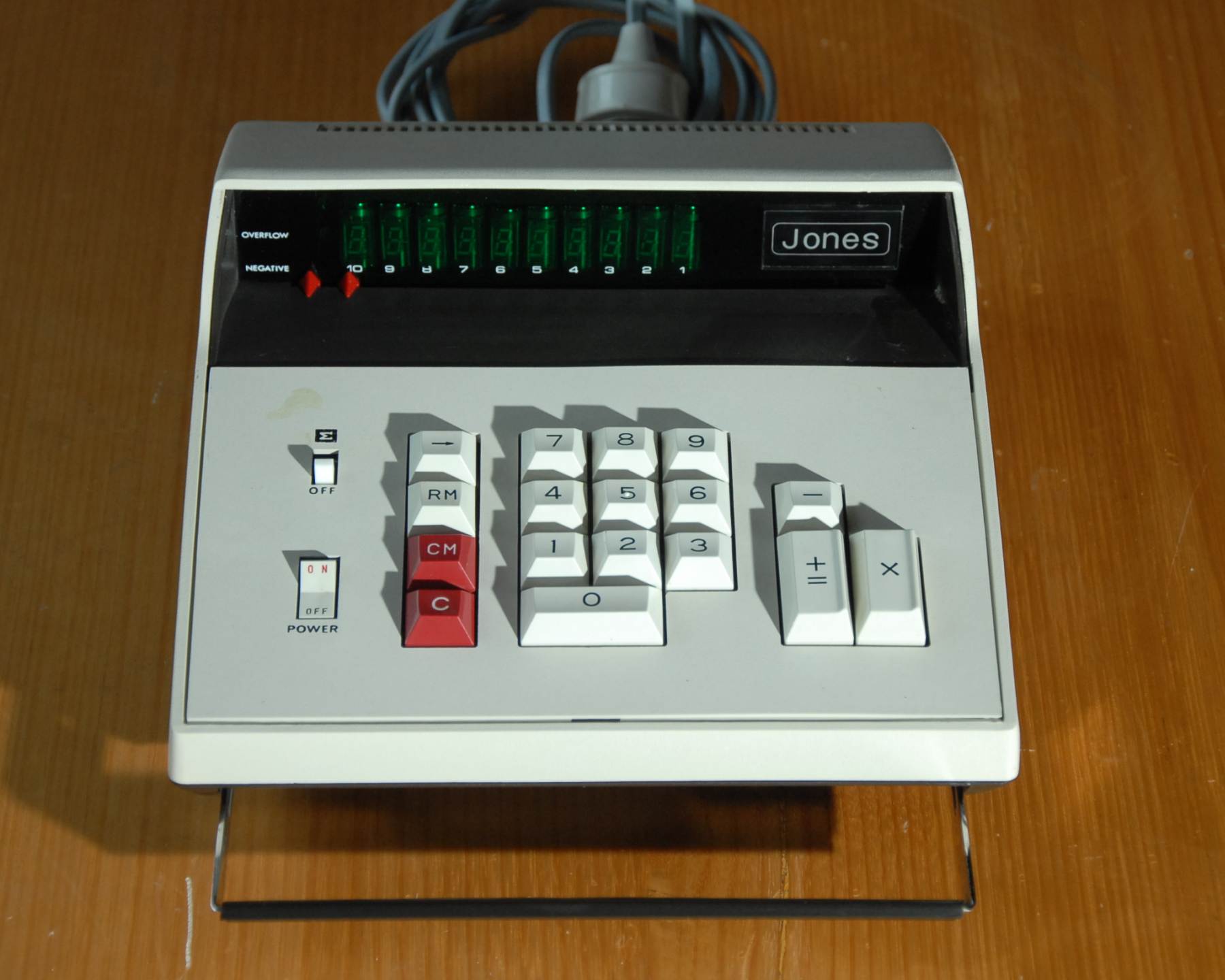Brother Calculators - Overview
Brother Industries’ origin was in 1908 as the Yasui Sewing Machine Company. The sewing machine company was successful throughout the pre-WWII period and as post-war reconstruction gathered pace the company began to diversify and the “Brother” name was used on more of its products.
In 1961 the diversification extended to include office machines, then printers and communications equipment, and then electronic calculators. Brother’s online corporate history identifies three early electronic calculators:
- Model 130 JC2-113 A first-generation discrete transistor machine, introduced in 1966.
- Model 412 A 1968 product, described as being “with ICs”
- Model 710 JC2-710 The final calculator listed, in 1970. It is claimed to be the first calculator to contain three Mitsubishi LSI ICs
The calculator history does not continue after 1970 although Brother continued to produce calculators right through the 1970s, until about 1980. Brother’s calculators in that period were of the commodity, mass-market type and perhaps this business was not judged to be sufficiently interesting to be included in the corporate history.
Brother Pro Cal 512 Calculator
The Pro Cal 512 does not appear in the Brother corporate history but it is very similar to the Model 412 described above. It is likely that the Pro Cal 512 is a further development of the 412.
The Pro Cal 512 is a hybrid first-second generation machine using SSI ICs and a large amount of discrete diode-transistor logic. It is nevertheless fairly sophisticated with 4 functions, fixed decimal point with selectable rounding, one memory, constant and accumulation functions.
The ICs are SSI gate-level chips from the Mitsubishi M59xx family, this was a unique Japanese implementation of early TTL.
It is interesting to note the high level of sophistication that was achieved in the Pro Cal 512 using first and second generation technology, compared with the more limited result that was obtained two years later as the Japanese began to work with the next generation MOS LSI technology in the Model 310.
Jones / Brother Pro Cal 310 Calculator
This unusual machine is integer only with no decimal point, and has just three functions. It lacks the ability to divide! The user manual is quite open about this, and a page is given over to describing how division can still be done by looking up the divisor in a table of reciprocals and then using the calculator to multiply the dividend by the reciprocal of the divisor, followed by manual decimal correction of the result since the calculator is integer-only.
The functional limits are probably the result of this machine being built entirely from early LSI ICs. The Japanese electronics industry was quick to recognise the need to pursue LSI technology but when developing this early chipset it seems that the designers were unable to achieve the logic for division.
The example machine was obtained from the UK and is branded “Jones”. This suggests that it was sold in the UK after 1968, when Brother took over the Jones Sewing Machine Company of Manchester. The original user manual identifies it as a Pro Cal 310 but internal examination shows three Mitsubishi LSI chips, suggesting that it may be closely related to the Model 710 that is noted in the corporate history.



